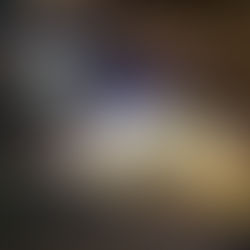Fascinating Tales in Stone: Weavers Caves Rock Art
- Dan Wagner
- 2 days ago
- 3 min read
Tucked away in the rugged canyons of eastern Utah, Weavers Caves are a hidden gem that offer a glimpse into the ancient past. The natural rock shelters, carved by time and weather, are not only geological wonders but also hold deep cultural significance. Scattered across their walls are striking examples of prehistoric rock art—pictographs that tell stories of the people who once lived and traveled through the region.
The artwork, featuring abstract patterns, human figures, and mysterious symbols, is believed to have been created by the Fremont culture and possibly even earlier Indigenous groups. Faded but still vibrant against the sandstone canvas, these images speak to rituals, beliefs, and daily life from centuries ago. Weavers Caves remain a quiet, powerful testament to the creativity and spiritual expression of Utah’s earliest inhabitants, and are a can't miss hike when exploring the Escalante area.


Trailhead elevation 5,583'
Water none
Don't miss the canyon overlook just beyond the caves
Hiking to Weavers Caves
I awaken to a sharp bite in the air, the chill of a late March dawn wrapping around my camp like a silent warning. Spencer Flat Road lies still beneath the pale wash of early light, and somewhere out there, the trail to the Cosmic Ashtray waits under a sky stretched taut with stars. The cold presses deep into my bones, but a sense of anticipation burns brighter. Today is no ordinary day—it’s a pilgrimage to Weavers Caves, the 100 Hands Panel, and the cascading wonder of Lower Calf Creek Falls.
I break camp with stiff fingers and head east along the serpentine curves of Route 12, bound for a spot that’s eluded for years: Weavers Caves. After a short drive, I pull into a slickrock slab parking area at coordinates 37.7671691, -111.4272736. Two footpaths stretch before me and I follow the one to the right—unmarked but clearly well-traveled.

The sandy trail flanks the highway for 0.3 miles before I veer left into a wash, where the sound of the road slowly fades away.

For years, I told myself I'd come here. But life, like the shifting sands underfoot, has a way of sweeping plans aside. Today, finally, the moment arrives. The wash winds on for a mile, its soft bed cradling my footsteps.

Then come the slickrock slopes—steep but manageable—descending into an amphitheater of flame-colored stone.

I pass through a narrow cleft in the rock, the world pressing in before suddenly opening to reveal two gaping potholes carved by the hand of Mother Nature. Before me, etched in the red skin of the canyon wall, lies the scrawled legacy of Claud Elder, James Johansen, and Elmo Kendall—names chiseled over a hundred years ago, still clinging to the stone.

The first pothole is six feet deep, bone-dry and shadowed. A thick tree limb spans its mouth, a natural bridge I cross with a careful step.

Another limb leads downward past the second hole, acting as a balance beam as I move forward.

I follow the twisting wash another quarter mile, beneath the looming brow of a Navajo Sandstone overhang. Then, just before a dryfall, they appear—the southwesterly-facing caves, their gaping mouths dark with promise.

I move cautiously, stepping lightly into the first cave. Along its right side, a gallery of ancient art blooms in ochre and rust. Figures speak without words, their meanings lost to time but vibrating with life.


I drift through the second cave, where even more images whisper from the walls—mysterious, eternal.


These are the Weavers Caves, so named by Ken Castleton—physician, author, rock art devotee—who listened to the stories of local ranchers. They saw sewing needles in the markings, and Castleton gave the place its name. His 1979 work, Petroglyphs and Pictographs of Utah, immortalized the site, introducing the world to this hidden trove.

In the third cave, I find what might be my favorite panel—symbols and spirits etched in stone, whispering through time. I sit for a moment, letting the weight of centuries wash over me.


Eventually, I wander to a wide flat expanse overlooking the canyon. The silence here is holy. I launch my drone, its hum the only sound as it sails through the empty air, searching the cliffs and alcoves for more signs of human history—but the land guards its secrets well.

After half an hour lost in wonder, I retrace my steps through the sandstone labyrinth, back to the trailhead. The journey isn’t over. Just a few miles away, the 100 Hands Panel waits—another echo of the ancients, another chapter in the story of this sacred land.
_edited.png)









































































Comments